Process Valves That can ‘Think’ for Themselves
25th October 2012
Source:
Burkert Fluid Control Systems
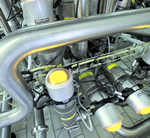
Amazingly the modern process valve has been with us for over 300 years, regulating the flow of liquids under pressure. Since then, the basic process valve has remained the same in principle, but with the ever growing automation of drinks, food and confectionary production the control of process valves has inevitably become more complex.
The general trends in factory automation have been heading towards more precise control and more information being gathered at device level, in order to provide feedback for control loops and better information for increasingly sophisticated plant visualisation, management and reporting software.
Better control has also paved the way for continuous processes, reduced waste, improved hygiene and greater efficiency. However, in some applications the tide is now turning back towards a focus on the valve itself; increasingly intelligent and robust field control devices are allowing valves to talk to each other and work independently to an increasingly complex set of rules and parameters.
So, when is centralised control still desirable and how can de-centralised control be employed to improve process systems?
Automated process valves, depending on their size and design can either be ‘piloted’ i.e. a pressurised air supply or pressure from the medium being controlled is used to actuate the valve, or, an external actuator is used (typically an electric ball screw or pneumatic / hydraulic cylinder on larger valves), or, an electric solenoid is used.
These items are usually connected to a PLC or other electronic controller, one which uses a software program or routine in order to keep the sequence and operation of the process valves in synchronisation with the desired pressure, flow and mixing required of the fluid being controlled.
If a compressed air supply is available, then piloting the valves may be the right option and there are some innovative solutions on the market to connect large numbers of pneumatic control air lines to a control valve manifold block in a hygienic environment.
One example is Bürkert’s new AirLINE Quick interface that offers a reliable, compact and time-saving solution for the direct mounting of valve islands and automation equipment into a stainless steel control cabinet, suitable for food grade wash down environments. Eliminating the need for individual bulkhead connections, and internal piping, it has rows of push-fit connectors and exhaust valves integrated into one stainless steel interface plate. It allows for an altogether smaller design of control cabinet for hygienic process actuation in the food, beverage or pharmaceutical industries.
When connecting larger numbers of process valves, which are often required in high densities for continuous process applications – typically supplying fluids such as ingredients or for CIP processes in confectionary production - then a distributed control approach may be more suitable. Using fieldbus protocols such as ASi, Profibus and DeviceNet allows individual valves to be connected using just one or two cables.
There is an excellent solution, again pioneered by Bürkert, that allows process valves from a wide variety of manufacturers to be controlled centrally, or indeed given a level of independence; Bürkert’s new Type 8681 control head offers the key advantage of universal fitment onto third- party hygienic valves: single seat valves, double seat, mix proof, and also quarter turn ball and butterfly valves that have linear stainless steel actuators. The 8681 is compatible with a full range of fieldbus communication networks, and is enclosed in a robust housing that is rated up to IP67 enabling it to be washed down and cleaned safely.
For the final layer of distributed control, many process valve automation applications can now dispense entirely with the control cabinet, bringing true process automation down to valve level. Bürkert’s type 8793 controllers are essentially designed to cut costs in processing applications by allowing a systems engineer to replace an entire control cabinet with one neat controller with a built-in backlit display and keypad.
The relative costs of a separate enclosure, rack mounted plc, I/O, cabling, power supply, HMI etc. can effectively be replaced with just one small control unit that can be mounted either on or very near to the process valve.
The key to finding the best possible automation solution is ultimately through an analysis of each individual part of the plant or installation. In this way, the question of where plant intelligence should rest can be answered: i.e. does the nature of the application require centralised control interfacing to non-intelligent nodes, or does the physical size of the system mean that control has to be decentralised – using a fieldbus system and intelligent valves and actuators, or, can smaller machines or areas be controlled by one localised but powerful process controller – the answer could a mixture of all the options, but the advantage today is that there are new and innovative solutions available for each.
Better control has also paved the way for continuous processes, reduced waste, improved hygiene and greater efficiency. However, in some applications the tide is now turning back towards a focus on the valve itself; increasingly intelligent and robust field control devices are allowing valves to talk to each other and work independently to an increasingly complex set of rules and parameters.
So, when is centralised control still desirable and how can de-centralised control be employed to improve process systems?
Automated process valves, depending on their size and design can either be ‘piloted’ i.e. a pressurised air supply or pressure from the medium being controlled is used to actuate the valve, or, an external actuator is used (typically an electric ball screw or pneumatic / hydraulic cylinder on larger valves), or, an electric solenoid is used.
These items are usually connected to a PLC or other electronic controller, one which uses a software program or routine in order to keep the sequence and operation of the process valves in synchronisation with the desired pressure, flow and mixing required of the fluid being controlled.
If a compressed air supply is available, then piloting the valves may be the right option and there are some innovative solutions on the market to connect large numbers of pneumatic control air lines to a control valve manifold block in a hygienic environment.
One example is Bürkert’s new AirLINE Quick interface that offers a reliable, compact and time-saving solution for the direct mounting of valve islands and automation equipment into a stainless steel control cabinet, suitable for food grade wash down environments. Eliminating the need for individual bulkhead connections, and internal piping, it has rows of push-fit connectors and exhaust valves integrated into one stainless steel interface plate. It allows for an altogether smaller design of control cabinet for hygienic process actuation in the food, beverage or pharmaceutical industries.
When connecting larger numbers of process valves, which are often required in high densities for continuous process applications – typically supplying fluids such as ingredients or for CIP processes in confectionary production - then a distributed control approach may be more suitable. Using fieldbus protocols such as ASi, Profibus and DeviceNet allows individual valves to be connected using just one or two cables.
There is an excellent solution, again pioneered by Bürkert, that allows process valves from a wide variety of manufacturers to be controlled centrally, or indeed given a level of independence; Bürkert’s new Type 8681 control head offers the key advantage of universal fitment onto third- party hygienic valves: single seat valves, double seat, mix proof, and also quarter turn ball and butterfly valves that have linear stainless steel actuators. The 8681 is compatible with a full range of fieldbus communication networks, and is enclosed in a robust housing that is rated up to IP67 enabling it to be washed down and cleaned safely.
For the final layer of distributed control, many process valve automation applications can now dispense entirely with the control cabinet, bringing true process automation down to valve level. Bürkert’s type 8793 controllers are essentially designed to cut costs in processing applications by allowing a systems engineer to replace an entire control cabinet with one neat controller with a built-in backlit display and keypad.
The relative costs of a separate enclosure, rack mounted plc, I/O, cabling, power supply, HMI etc. can effectively be replaced with just one small control unit that can be mounted either on or very near to the process valve.
The key to finding the best possible automation solution is ultimately through an analysis of each individual part of the plant or installation. In this way, the question of where plant intelligence should rest can be answered: i.e. does the nature of the application require centralised control interfacing to non-intelligent nodes, or does the physical size of the system mean that control has to be decentralised – using a fieldbus system and intelligent valves and actuators, or, can smaller machines or areas be controlled by one localised but powerful process controller – the answer could a mixture of all the options, but the advantage today is that there are new and innovative solutions available for each.
Similar articles
More from Burkert Fluid Control Systems
- Continuous water quality analysis for boreholes 6th July 2020
- Controller delivers precision microlitre dosing 14th May 2020
- Multi-medium testing facility for fluidic components 19th March 2020
- Micro precision for time-pressure dosing 10th December 2019

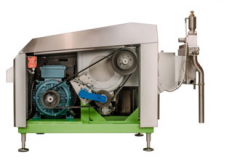
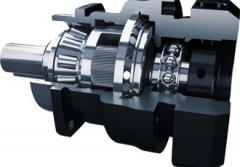
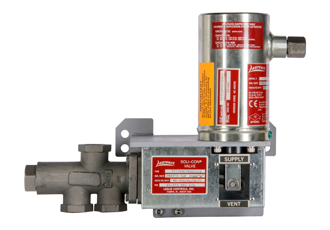
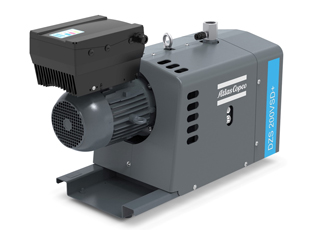







Write a comment
No comments